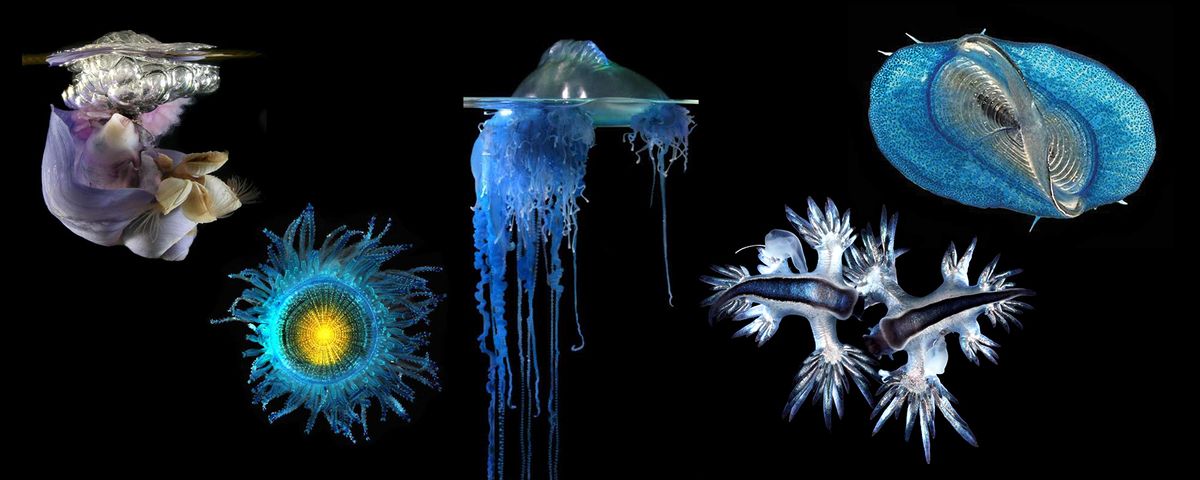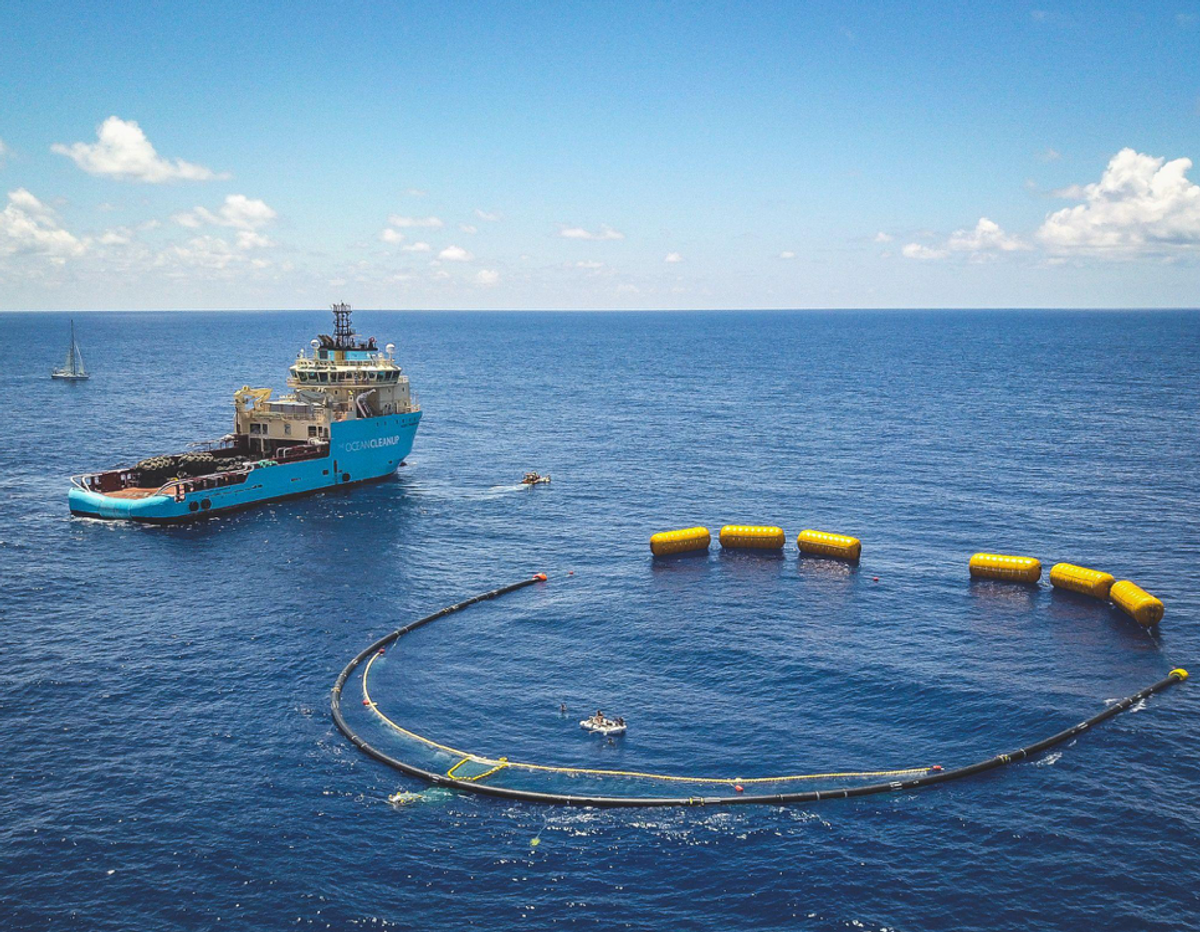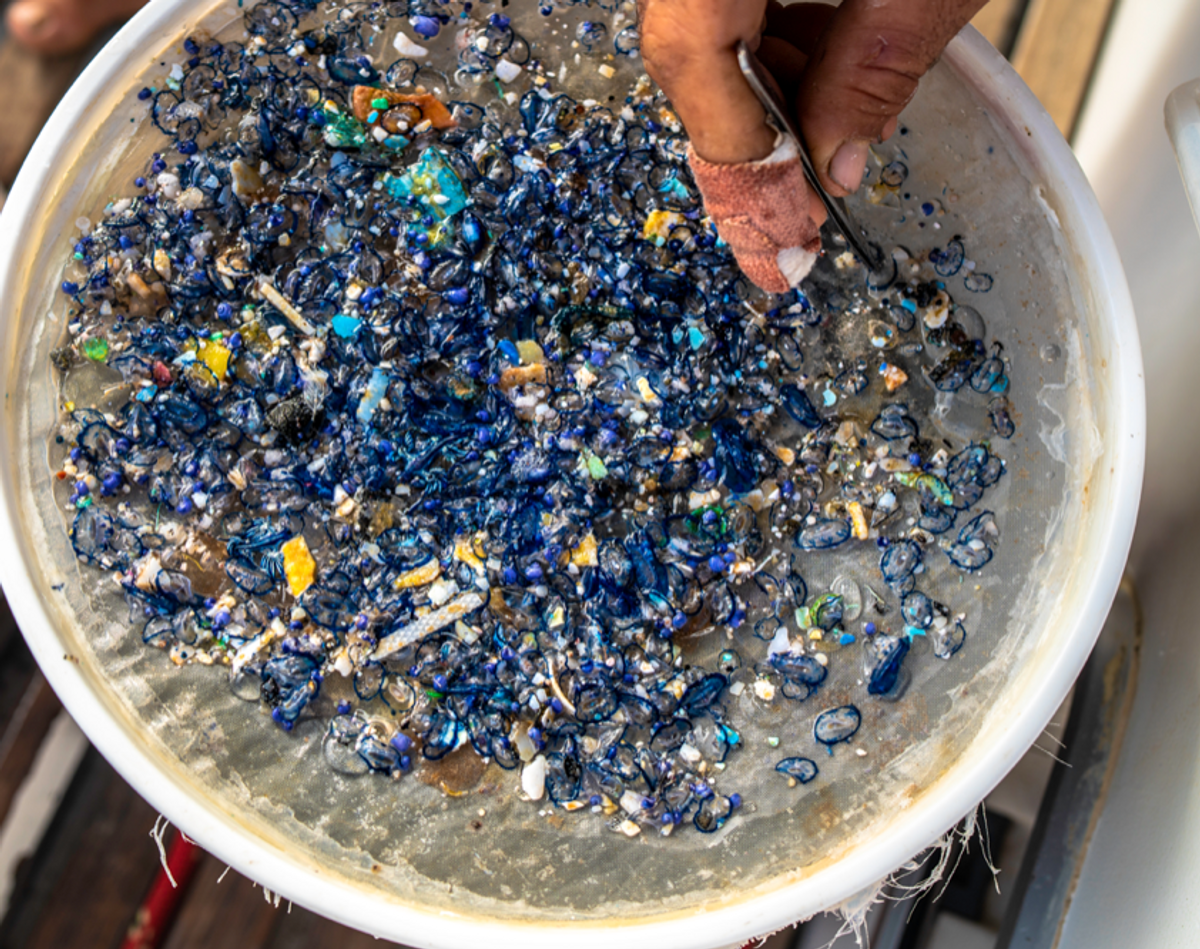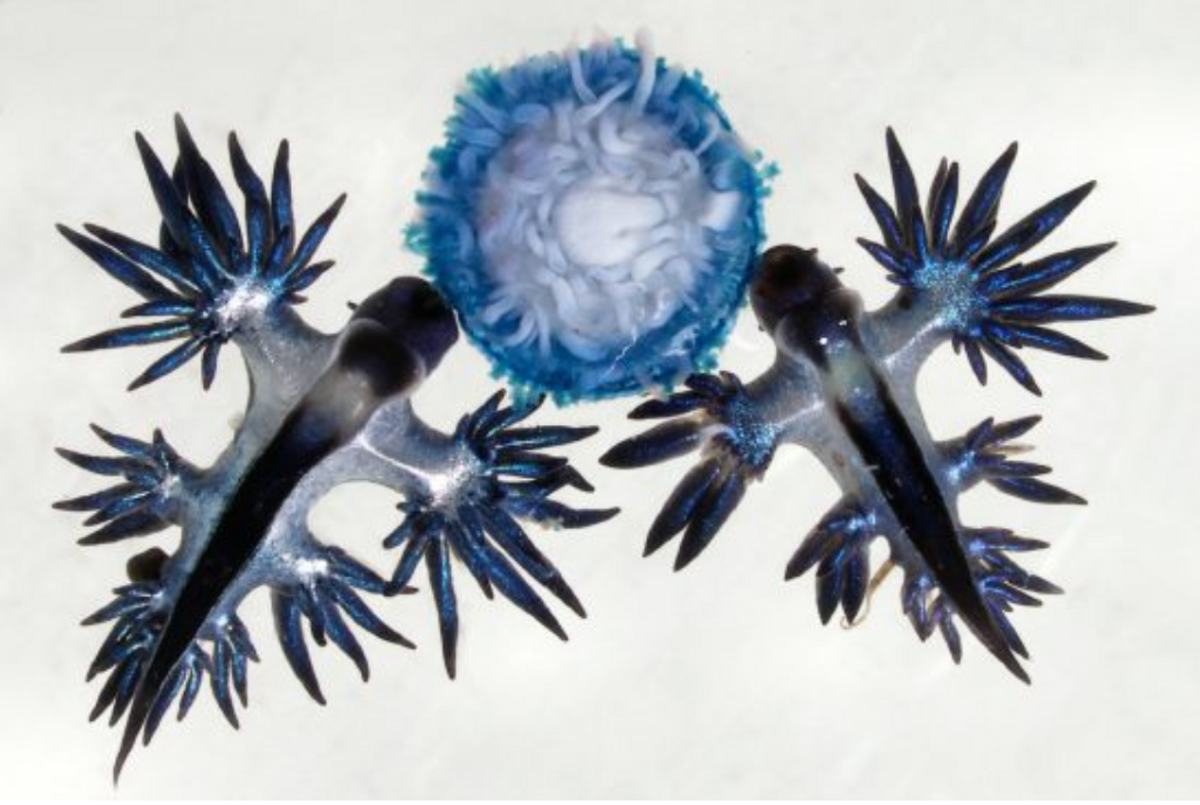Researchers now estimate that roughly 11 million metric tons of plastic waste enters the world’s oceans each year, including everything from bottle caps and buckets to discarded fishing nets. The race is on to devise innovative methods for recovering this waste, but efforts such as The Ocean Cleanup contend with how to retrieve debris without harming the so-called neuston—the animals and other organisms living at the surface. But with so little known about neuston, the teams leading these initiatives must consider whether solving the plastic problem risks creating an ecological disruption.
Read the full story.
Far out at sea, plastic trash—much of it discarded fishing gear—gets caught up in currents and concentrated in oceanic gyres. The largest of these aggregations is the Great Pacific Garbage Patch, within the North Pacific Gyre, a vortex of converging currents that stretches from California to Japan.

Also accumulating in these areas are neuston—snails, sea slugs, cnidarians, insects, and other organisms that live at the ocean’s surface. Although little is known about these species, which range from the size of a grain of sand to that of a hefty grapefruit, some scientists stress that groups such as The Ocean Cleanup that are invested in cleaning up oceanic plastic need to consider the impacts their work has on the neuston.


Now scientists, including members of The Ocean Cleanup’s scientific team, are generating data to untangle the distributions, ecological roles, and life histories of these species by sampling them alongside recovered plastic.

Early research has shown that neuston are a valuable food source within their own community as well as for other marine species including birds, fish, and turtles. Here, two blue dragon sea slugs (Glaucus marginatus) feed on a blue button (Porpita porpita), a close relative of jellyfish.

Because they live at the surface—the interface between ocean and atmosphere—neuston could also affect large-scale processes such as global climate through their ability to mediate surface chemistry, absorb UV radiation, and fix carbon dioxide, according to researchers.
